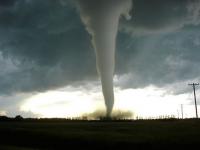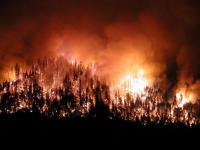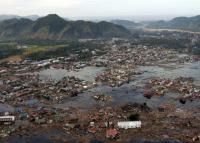-
Assessing climate change risks to U.K.
Climate change is happening now. Globally, 14 of the 15 hottest years on record have occurred since 2000. The impacts of climate change are already being felt in the United Kingdom, and urgent action is required to address climate-related risks, the Committee on Climate Change’s (CCC)’s Adaptation Sub-Committee (ASC) said the other day.
-
-
100s of deaths in two cities in 2003 heatwave due to man-made climate change: Scientists

Scientists have specified how many deaths can be attributed to man-made climate change during an extreme heatwave in two European cities in 2003. The study says that with climate change projected to increase the frequency and severity of future heatwaves, these results highlight an emerging trend. The authors suggest that such research gives policymakers better information about the damaging effects of heatwaves to help them respond to the future challenges of climate change.
-
-
U.S. suffered at least $8 billion climate-related disasters so far this year

We are only halfway through 2016 and the United States has already seen eight weather and climate-related disasters* that have each met or exceeded $1 billion in damages. These eight disasters resulted in the loss of thirty lives, and caused at least $13.1 billion. Since 1980 the United States has sustained 196 weather and climate disasters in which overall damages/costs reached or exceeded $1 billion. The total cost of these 196 events exceeds $1.1 trillion.
-
-
June was the warmest on record for contiguous U.S.
Summer is off to a sizzling start. The average June temperature for the Lower 48 states was 71.8 degrees F, making it the warmest June on record. Above-average temperatures spanned the nation from coast to coast, and seventeen states across the West, Great Plains, and parts of the Southeast experienced temperatures much above average. June precipitation for the contiguous U.S. averaged 2.46 inches, 0.47 inch below average, ranking as the fourteenth driest on record.
-
-
Impact of demographic development on fires in ecosystems as strong as that of climate change

Every year, about 350 million hectares of land are devastated by fires worldwide. This corresponds to about the size of India. To estimate the resulting damage to human health and economy, precise prognosis of the future development of fires is of crucial importance. Previous studies often considered climate change to be the most important factor. Now, a group of scientists has found that population development has the same impact at least.
-
-
Learning to live with wildfires: how communities can become “fire-adapted”
In recent years wildfire seasons in the western United States have become so intense that many of us who make our home in dry, fire-prone areas are grappling with how to live with fire. We know that fuel reduction in dry forests can mitigate the effects of wildfires. After decades of fire exclusion, dense and dry forests with heavy accumulations of fuel and understory vegetation often need to be treated with a combination of thinning and prescribed burning. Native peoples, less than 150 years ago, proactively burned the landscapes we currently inhabit – for personal safety, food production, and enhanced forage for deer and elk. In some places, people still maintain and use traditional fire knowledge. As we too learn to be more fire-adapted, we need to embrace fire not only as an ongoing problem but an essential part of the solution.
-
-
Coconut shells inspire design ideas for earth-quake proof buildings

Coconuts are renowned for their hard shells, which are vital to ensure their seeds successfully germinate. Coconut palms can grow 30-meter high, meaning that when the ripe fruits fall to the ground their walls have to withstand the impact to stop them from splitting open. The specialized structure of coconut walls could help to design buildings that can withstand earthquakes and other natural disasters.
-
-
Electromagnetic fields could be used in tsunami early warning

Could electromagnetic (EM) fields be used in tsunami early warning? New research shows that important focal parameters of tsunamigenic earthquakes — particularly fault dip direction — can be extracted from tsunami-borne EM fields.
-
-
Lessons learned from the U.S.-Canada cross-border experiment
A tornado has just devastated a community on the border between the United States and Canada. Paramedics scramble to bring patients from over-crowded hospitals across the border. Communication blackouts and downed trees force ambulances to weave their way through blowing debris, fallen electrical lines, and car wrecks. The time for a routine trip from the injury site to the hospital has now tripled. While this did not really happen, it was the focus in April when the DHS S&T and several Canadian government agencies collaborated on a cross-border experiment with a focus on preparing emergency responders for this type of scenario.
-
-
Colorado county adopts NIST community resilience guidelines
The Boulder County Collaborative, a partnership of Boulder County, Colorado, communities formed in response to the catastrophic floods that struck the region in September 2013, has used the NIST Community Resilience Planning Guide for Buildings and Infrastructure Systems to develop and adopt its own resilience design performance standard for community facilities and infrastructure systems.
-
-
New tool to measure homeland security risks
DHS has a broad and complex mission, with priorities that include preparing for and responding to a range of terrorist events, natural disasters, and major accidents.Researchers have applied a tool originally developed to address risks in environmental policy, the Deliberative Method for Ranking Risk, to aid in strategic planning for security.
-
-
State budgets $10 million for earthquake early warning
Governor Jerry Brown has signed a 2016-17 state budget that provides $10 million to help launch a statewide earthquake early-warning system. Although California passed a mandate in 2013 to create a statewide earthquake warning system, this is the first money appropriated by the state to make it a reality. The federal government has already provided $13.2 million to improve and test a prototype West Coast early-warning system, but this is much less than the $38 million in buildout costs and $16 million per year in operating costs needed to establish a fully functioning system serving California, Oregon, and Washington.
-
-
New analysis reveals large-scale motion around San Andreas Fault System
An array of GPS instruments near the San Andreas Fault System in Southern California detects constant motion of Earth’s crust — sometimes large, sudden motion during an earthquake and often subtle, creeping motion. The researchers discovered nearly 125 mile-wide “lobes” of uplift and subsidence — a few millimeters of motion each year — straddling the fault system. This large scale motion was previously predicted in models but until now had not been documented.
-
-
Waterworld: Learning to live with flooding
Flash floods, burst riverbanks, overflowing drains, contaminants leaching into waterways: some of the disruptive, damaging, and hazardous consequences of having too much rain. But can cities be designed and adapted to live more flexibly with water – to treat it as friend rather than foe?
-
-
Thirty-one leading scientific societies call for action on climate change
In a consensus letter to U.S. policymakers, a partnership of thirty-one leading nonpartisan scientific societies the other day reaffirmed the reality of human-caused climate change, noting that greenhouse gas emissions “must be substantially reduced” to minimize negative impacts on the global economy, natural resources, and human health. Climate-change impacts in the United States have already included increased threats of extreme weather events, sea-level rise, water scarcity, heat waves, wildfires, and disturbances to ecosystems and animals, the intersociety group reported.
-
More headlines
The long view
Strengthening School Violence Prevention
Violence by K-12 students is disturbingly common. Ensuring that schools have effective ways to identify and prevent such incidents is becoming increasingly important. Expanding intervention options and supporting K-12 school efforts in Behavioral Threat Assessment and Management (BTAM) would help.
Huge Areas May Face Possibly Fatal Heat Waves if Warming Continues
A new assessment warns that if Earth’s average temperature reaches 2 degrees C over the preindustrial average, widespread areas may become too hot during extreme heat events for many people to survive without artificial cooling.
Trump’s Cuts to Federal Wildfire Crews Could Have “Scary” Consequences
President Donald Trump’s moves to slash the federal workforce have gutted the ranks of wildland firefighters and support personnel, fire professionals warn, leaving communities to face deadly consequences when big blazes arrive this summer. States, tribes and fire chiefs are preparing for a fire season with minimal federal support.
